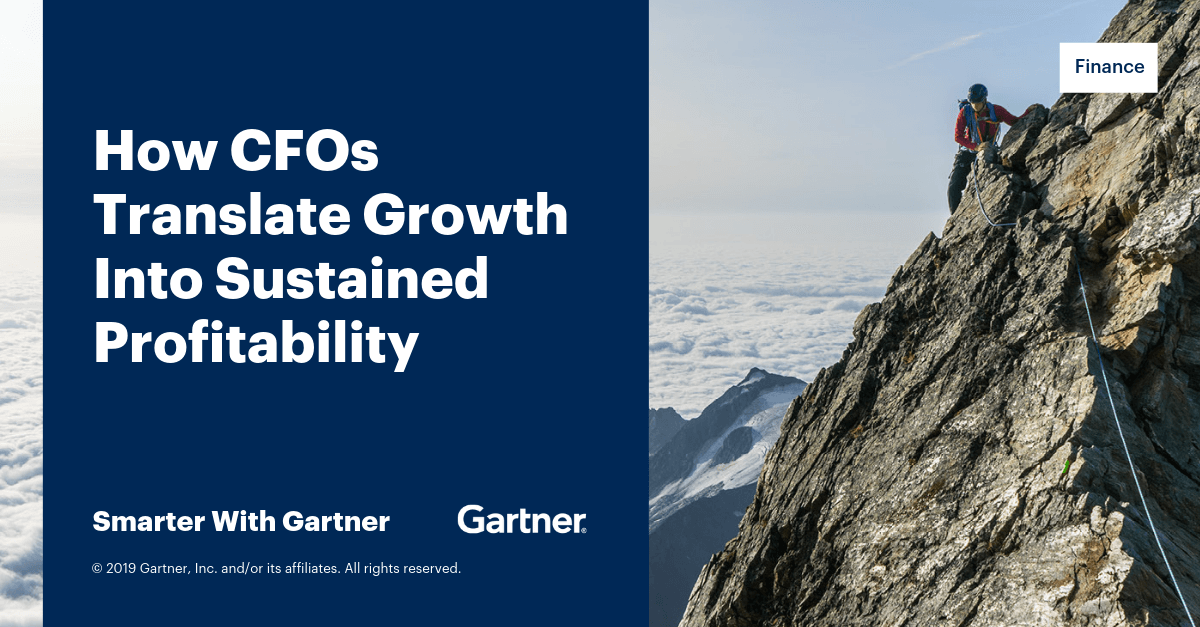
Controlling costs is not a new CFO priority, but the competitive pressure for top-line growth since the 2008 financial crisis has finance leaders urgently seeking ways to translate long-term growth bets into sustainable profitability. To capture top-line opportunities while expanding margins, CFOs need to restructure their cost bases.
How CFOs drive decision making on costs and growth will drive shareholder returns for the next decade
Companies that successfully grow the top line while reducing costs — hitting both short- and long-term targets — characterizes a performance trajectory that Gartner calls “efficient growth.” Efficient growth companies outperform across business cycles, reinvesting cost savings to fuel innovation and growth. However, most CFOs are struggling to create the conditions for efficient growth. How CFOs drive decision making on costs and growth will drive shareholder returns for the next decade.
[swg_ad]Drivers of urgency on costs
New economic and competitive factors are emerging that are consuming CFO time and attention:
- Industry transformation is driving up competition and supplier pricing power.
- Tariffs and geopolitical issues are increasing prices of inputs, intermediary goods and freight costs.
- Customers are demanding customized products and services and are more sophisticated buyers with more information and omnichannel purchasing options.
- New technologies on the cusp of broad adoption (e.g., machine learning, industrial and software robotic automation, driverless trucks) are resetting the base requirements for efficiency.
“In strong economic times, investors tend to focus on costs indirectly through the lens of growth — and are willing to view cost increases as investments,” says Jason Boldt, Director, Gartner. “But when macroeconomic uncertainty rises, their focus shifts rapidly to the bottom line.”
Under this pressure, CFOs and senior management teams often make decisions that don’t support long-term value creation. In the race to demonstrate cost-cutting efforts to protect shareholder returns, senior management often destroys value by cutting head count, switching to lower-quality inputs or delaying capital and innovation investments needed to achieve long-term goals.
Learn more: Achieve efficient business growth
Focus on building scale, not scope
Efficient growth companies, by contrast, force a longer-term view by focusing their management teams on building scale, not scope, in their cost structures. However, these success stories are rare. Only 5% of CFOs from the largest 1,200 global companies have been able to outpace industry competitors since the end of the financial crisis in both revenue growth and cost reduction.
The payoff for doing so is significant, with efficient growth leaders earning a 6.2 percentage-point return on invested capital (ROIC) premium over competitors and a 7.1 percentage-point ROIC premium over the broader S&P Global 1200.
Build and reinforce the necessary scale in the cost structure to secure long-term profitable growth
How do they do it? Research shows some unique approaches. When compared with similar-sized competitors, efficient growth companies:
- Structure product and services lines into 24% fewer segments, focusing functional and operating costs on simpler and stronger portfolios
- Invest in 18% fewer industries as part of their business portfolios, only pursuing adjacent expansion when they can leverage fixed costs for efficiency or competitive positioning.
- Concentrate their customer acquisition and operational footprints, deriving 20% more revenue from their largest geographic segments.
These actions — focused bets, simple product and service portfolios, and dense operating and customer footprints — build and reinforce the necessary scale in the cost structure to secure long-term profitable growth across economic cycles.
Read more: 3 Hallmarks of Standout CFOs
Optimizing costs for efficient growth
The following steps will help CFOs seeking to build their own growth plans from the foundation of differentiating costs:
- Increase scale by focusing growth bets on a limited number of industries, concentrating fixed costs on fewer product and service lines, and creating denser operational and customer footprints.
- Protect profit sustainability by pursuing new sources of growth based on differentiating costs, such as proprietary technology and processes, access to resources and superior customer experience.
- Reduce scope addition from organizational processes by aligning incentives to cost levers that reinforce scale.
- Earn business buy-in for cost reduction by using social-competitive mechanisms to sustain scale-based cost savings.
- Maintain the urgency of strong cost control by partnering with the CEO to set long-term symbolic cost optimization targets that align and motivate management.
The post How CFOs Translate Growth Into Sustained Profitability appeared first on Smarter With Gartner.
read more at https://blogs.gartner.com/smarterwithgartner by Jordan Bryan
Business









